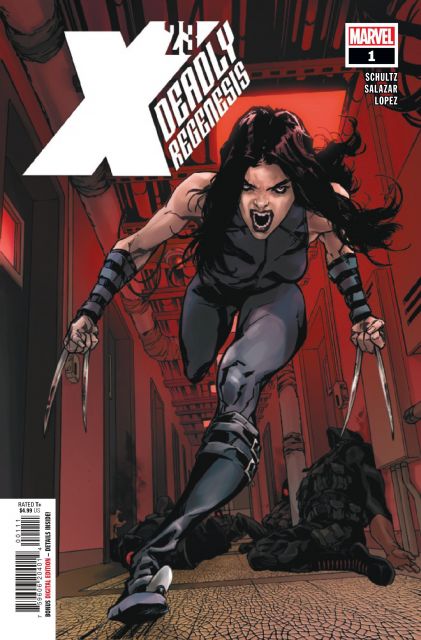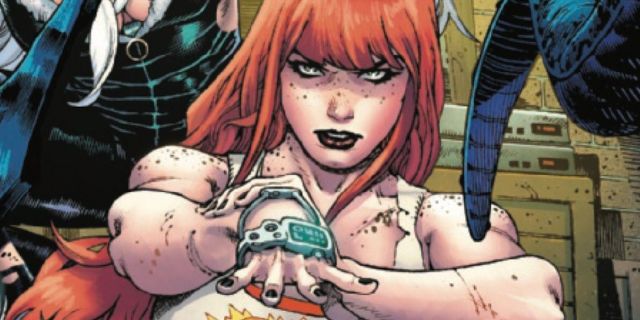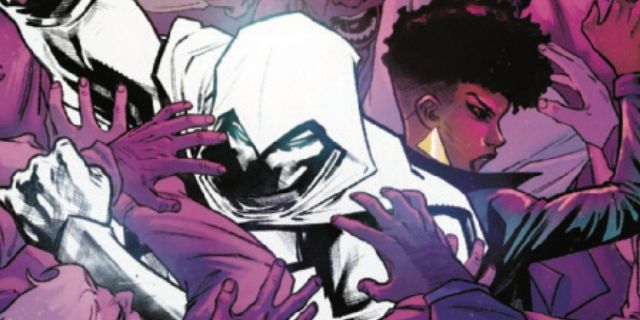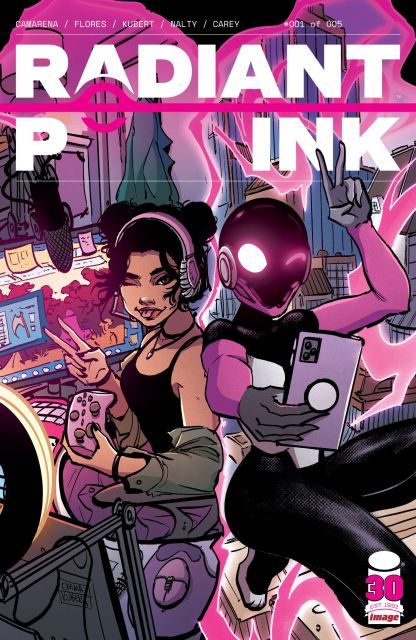Consumed by darkness and jealousy, the evil goddess Shathra is out to infect the Great Web with her wickedness, turning every Spider-Hero in the Spider-Verse into her minions. But for the Spiders of Earth-616, her solution is to erase them from existence using a mysterious dagger. When Peter Parker, the Chosen One, falls prey to the blade, Madame Web’s plans to save the multiverse are ruined- or are they? Spider-Man #4, written by Dan Slott with artwork from Mark Bagley, John Dell, and Andrew Hennessy, colors by Edgar Delgado, and letters from VC’s Clayton Cowles, continues the epic series with the arrival of a new Spider-Man.
Spider-Man #4 opens on Earth-44145, where Spiders-Man and that reality’s spider-powered Norman Osborn sacrifice themselves to stop Spider-Biodroid and Spider-Rex from taking them captive. As Madame Web sees the events unfold in her visions, she begins to lose hope for the future of the world. Elsewhere, Anya and Felicia fight their way out of the temple, pushing through a swarm of infected Spider-people as Kraven and Miles move in on Shathra in Loomworld. They approach her lair stealthily, but upon hearing about Peter’s death, Miles loses control of his emotions and lunges at the fallen Goddess. Meanwhile, Morlun, Silk, and their comrades encounter barriers of their own. When all hope seems lost, Madame Web introduces her next and final trump card.

Recognizing the expansive reach of the Spider-Verse, series creator Dan Slott branches the story into multiple narratives that spread out like webs of their own. Understandably, Spider-Man #4 can be a little chaotic, and the shifting focus is enough to make even the most attentive reader lose their head in the maze-like structure of the book. But most of the time, Slott keeps the characters circling the same scenes, quipping or bickering amongst themselves to stretch the story until the final reveal. Fortunately, there are so many moving parts that this issue still feels fast-paced. This is the first time Madame Web feels genuinely lost as her despairing interior monologue starts to affect her exchanges with others. Letterer Clayton Cowles gets to show a range of fonts for different Spider-Folks, making their personalities stand out from the rest. His arrangement of the texts never takes away from the action, encircling the panels like a halo to emphasize each character’s disposition.
Spider-Man veteran artist Mark Bagley keeps the engine running with his sprightly artwork. Every nook and cranny of the book is crawling with ceiling-jumping, web-swinging, Spider-themed characters who are always in motion. With so much going on in each panel, Bagley’s thin lines might struggle to stand out amongst the jumbled backdrop of arachnids. Luckily, inkers Dell and Hennessy bring clarity to the artwork. Colorist Edgar Delgado’s colorful presentation makes the heroes jump out of every panel in more ways than one. Even in the darker environments of Loomworld, Delgado’s use of soft, bright colors makes the place look sinister and mysterious.

When everything looks bleak, and the situation gets direr by the minute, Spider-Man #4 pulls one of the most shocking rabbits out of the hat, materializing a forgotten piece of trivia about Marvel’s most popular superhero. It is the turning point in the tale, although the tables are yet to be reversed. Shathra still holds most of the cards in her hands, but the conclusion of this issue will have far-reaching ramifications.















Leave a Reply